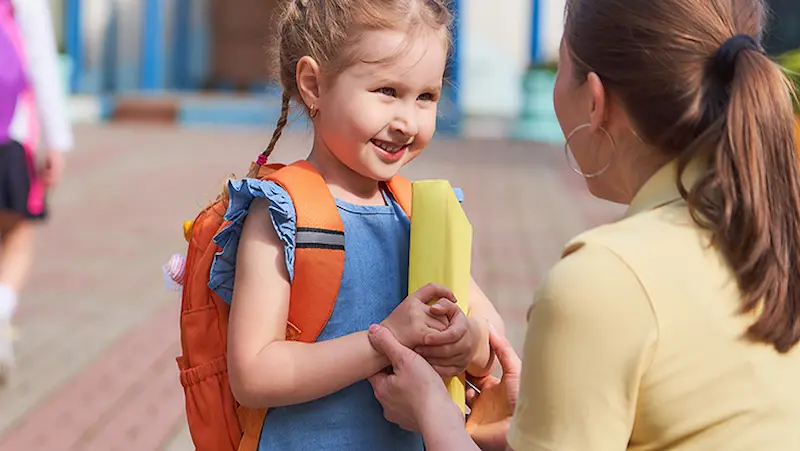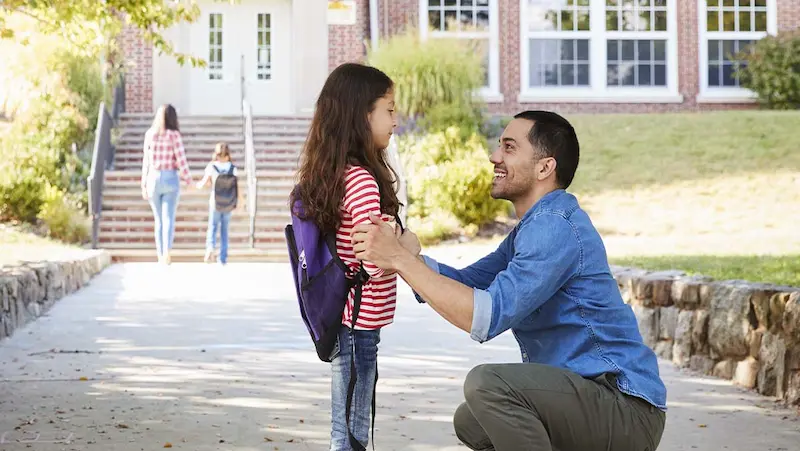Preparing children for school is like laying the foundation for a sturdy building. Just as a solid foundation ensures a structure’s stability, school readiness advice sets children up for success in their educational journey. But what exactly is school readiness, and why is it so important?
School readiness refers to a child’s ability to thrive and learn in a classroom environment. It’s not just about knowing the ABCs or counting to ten; it encompasses a range of skills, from social and emotional development to cognitive abilities and physical health. When children enter school with the necessary skills and knowledge, they are better equipped to engage with their teachers, interact with peers, and grasp new concepts.
The importance of school readiness advice cannot be overstated. Research has shown that children who start school with a strong foundation are more likely to excel academically, have better social skills, and exhibit fewer behavioral problems. On the other hand, children who lack school readiness advie may struggle to keep up with their peers, leading to frustration, disengagement, and even long-term academic challenges.
Table of contents
- Understanding School Readiness
- Nurturing Early Language Skills
- Introducing Basic Math Concepts
- Building Early Literacy Skills
- Emotional Preparedness for School
- Introduction to Basic Hygiene Practices
- School Supply Preparation
- School Visit and Orientation
- Health Check and Immunizations
- Conclusion
- Frequently Asked Questions
Understanding School Readiness
Preparing for school involves more than just buying backpacks and notebooks. It’s about getting kids ready academically, socially, and emotionally. Let’s dive into what these aspects entail:

Academic Readiness:
Academic readiness means making sure your child has the basic skills needed for school. This includes things like recognizing letters, numbers, colors, and shapes. It’s also about understanding simple instructions and being able to focus and pay attention.
- Pre-Reading Skills: Before starting school, kids should have some exposure to books for kids and stories. They should be able to recognize letters and maybe even some simple words. Reading to your child and pointing out letters and words in everyday life can help with this.
- Math Concepts: Basic math skills like counting, recognizing numbers, and understanding simple addition and subtraction are important for academic success. You can practice these skills through games, counting objects, and talking about numbers in everyday situations.
- Fine Motor Skills: Being able to hold a pencil, use scissors, and manipulate small objects are all important for school activities for kids like writing, drawing, and crafting. Activities like coloring pages for kids, playing with building blocks, and cutting with safety scissors can help develop these skills.
Social and Emotional Preparedness:
School isn’t just about academics; it’s also about interacting with others and navigating different social situations. Social and emotional school readiness advice involves understanding and managing feelings, getting along with others, and following rules and routines.
- Emotional Awareness: Kids should be able to recognize and express their feelings in healthy ways. This includes knowing how to talk about emotions and asking for help when needed. Encourage open communication with your child and validate their feelings.
- Friendship Skills: Making friends and getting along with peers is a big part of the school experience. Teach your child about sharing, taking turns, and being kind to others. Set up playdates and encourage social interactions to help them practice these skills.
- Independence: As kids enter school, they’ll need to learn to do things on their own, like dressing themselves, using the restroom independently, and following classroom routines. Encourage independence at home by giving them opportunities to make choices and take on responsibilities.
Nurturing Early Language Skills
Language is the key that unlocks countless opportunities for children. From their earliest days, it’s crucial to foster an environment that encourages communication and builds a strong foundation for language development. Here are some simple yet effective ways to nurture these skills in your child:

Encouraging Communication at Home
- Talk, Talk, Talk: Engage in conversations with your child throughout the day, even if they’re still babbling. Describe what you’re doing, ask questions, and listen attentively to their responses. This not only builds vocabulary but also teaches them the importance of communication.
- Create Language-Rich Environments: Surround your child with books, toys, and games for kids that stimulate language development. Label objects around the house, sing songs, and recite nursery rhymes together. These activities expose children to new words and help them understand the meaning of language.
- Be Patient and Responsive: When your child attempts to communicate, whether through gestures, sounds, or words, respond with enthusiasm and encouragement. Even if their attempts are not clear at first, acknowledge their efforts and provide the words they may be trying to express.
Reading Habits for School Readiness
- Make Reading a Daily Ritual: Set aside time each day to read with your child. Whether it’s a bedtime story or a quiet moment during the day, reading together creates a special bond and instills a love for books from an early age.
- Choose Age-Appropriate Books: Select books that are suitable for your child’s developmental stage. Board books with colorful pictures and simple text are ideal for babies and toddlers, while preschoolers may enjoy stories for kids with more complex plots and characters.
- Engage with the Text: Encourage your child to interact with the story by asking questions, making predictions, and pointing out details in the illustrations. This not only enhances their comprehension skills but also encourages critical thinking and creativity.
- Lead by Example: Let your child see you reading for pleasure, whether it’s a book, magazine, or newspaper. Children learn by imitating adults, so modeling positive reading habits sets a powerful example for them to follow.
Introducing Basic Math Concepts

Counting and Number Recognition Games:
- Play “Counting with Objects”: Use everyday items like toys or snacks to practice counting. Start with a small number and gradually increase the count as your child gets more comfortable.
- Number Flashcards: Create or purchase flashcards with numbers on them. Show them to your child and ask them to identify the number. You can also ask them to count the objects depicted on the card.
- Number Hunt: Turn everyday activities into a number hunt! Encourage your child to find and identify numbers around the house, like on clocks, calendars, or household items.
Everyday Math in Daily Activities:
- Cooking Together: Involve your child in measuring ingredients for recipes. This helps them understand concepts like fractions and measurements in a practical way.
- Grocery Shopping: Have your child help with grocery shopping by counting items as you put them in the cart or comparing prices to find the best deal.
- Setting the Table: Ask your child to help set the table for meals. This reinforces the concept of counting and arranging items in groups.
- Time Telling: Teach your child how to read analog clocks and understand concepts like hours, minutes, and seconds. Practice telling time throughout the day, using both digital and analog clocks.
Building Early Literacy Skills
Early literacy skills are the foundation upon which a child’s reading and writing abilities develop. As parents and educators, it’s crucial to provide ample opportunities for children to engage with language in various ways. Here are some essential components of early literacy development:

Recognizing Letters and Phonics
- Introduce Letters: Start by exposing children to the alphabet in a fun and interactive manner. Use alphabet books, games, and puzzles to familiarize them with each letter’s shape and sound.
- Phonics Practice: Teach phonics by associating each letter with its corresponding sound. Encourage children to identify beginning sounds in words and play rhyming fun games for kids to enhance phonemic awareness.
- Multi-sensory Learning: Engage multiple senses in letter recognition and phonics activities. Incorporate tactile materials like sandpaper letters or magnetic alphabet tiles to reinforce learning through touch.
- Repetition is Key: Practice letter recognition and phonics regularly. Repetition helps solidify connections in the brain, making it easier for children to remember letter-sound associations.
Early Writing Activities
- Provide Writing Tools: Offer children a variety of writing tools such as crayons, markers, pencils, and chalk. Experimenting with different writing materials helps develop fine motor skills necessary for writing.
- Encourage Scribbling: In the early stages of writing, children often engage in scribbling. Encourage this creative expression by providing blank paper or a chalkboard where they can freely explore making marks.
- Letter Formation: Guide children in forming letters correctly by demonstrating proper pencil grip and stroke sequence. Start with simple shapes and progress to more complex letters as their skills develop.
- Writing Prompts: Spark children’s imagination with writing prompts or storytelling activities. Encourage them to dictate stories or draw pictures to accompany their narratives.
- Celebrate Progress: Praise children for their efforts in writing, regardless of their proficiency level. Celebrating small achievements boosts their confidence and motivates them to continue practicing.
Emotional Preparedness for School

Talking About School Expectations:
Communication is key when it comes to setting expectations for the school year. Sit down with your child and have an open conversation about what they can expect from school and what is expected of them. Keep the discussion positive and encouraging, highlighting the exciting aspects of learning new things, making friends, and growing as a person.
Ask your child about any concerns or worries they may have and address them together. Reassure them that it’s normal to feel nervous about new experiences but remind them of their strengths and capabilities. Encourage a mindset of curiosity and resilience, emphasizing that challenges are opportunities for growth.
Addressing Separation Anxiety:
For many children (and even some parents), the prospect of being apart during the school day can trigger feelings of separation anxiety. It’s essential to acknowledge these emotions and provide support to help your child navigate them.
Start by gradually easing into the routine before the first day of school. Practice short separations, such as leaving your child with a trusted caregiver or spending time apart while they engage in independent activities. This helps build confidence and trust that you will always return.
On the first day of school, establish a comforting goodbye ritual, such as a special hug or a reassuring phrase. Keep goodbyes brief but loving, and resist the urge to linger if your child is upset. Trust in the teachers and staff to provide a nurturing environment, and reassure your child that you’ll be back to pick them up.
Throughout the transition, validate your child’s feelings and offer plenty of encouragement and praise for their bravery. Celebrate small victories and milestones, and remind them of the fun and exciting experiences waiting for them at school.
Introduction to Basic Hygiene Practices

Teaching Personal Hygiene
Teaching personal hygiene starts at home and is reinforced through education and societal norms. Parents play a crucial role in instilling good hygiene habits in their children from a young age. Here are some basic personal hygiene practices that are commonly taught:
- Handwashing: Washing hands with soap and water is one of the simplest yet most effective ways to prevent the spread of germs. Children should be taught to wash their hands before eating, after using the bathroom, and after playing outdoors.
- Oral Hygiene: Brushing teeth twice a day and flossing regularly helps maintain oral health and prevents tooth decay and gum disease. Parents should supervise their children’s brushing habits until they are old enough to do it independently.
- Bathing: Taking regular baths or showers helps keep the body clean and removes dirt, sweat, and bacteria from the skin. Children should be taught to bathe daily, especially after physical activity or exposure to dirt.
- Nail Care: Keeping nails trimmed and clean prevents the buildup of dirt and bacteria, reducing the risk of infections.
- Hair Care: Washing hair regularly helps remove oil, dirt, and sweat, keeping the scalp clean and healthy.
By teaching these basic hygiene practices early on, children develop lifelong good habits for kids that contribute to their overall well-being.
Bathroom Independence
As children grow older, they gain independence in using the bathroom. Toilet training is a significant milestone in a child’s development and involves teaching them how to use the toilet properly. Here are some tips for promoting bathroom independence:
- Potty Training: Introduce the concept of using the toilet to your child when they show signs of school readiness advice, such as staying dry for longer periods and expressing an interest in the toilet. Use a potty chair or a child-sized toilet seat to make the transition easier.
- Establish a Routine: Encourage your child to use the toilet at regular intervals, such as after meals or before bedtime. Establishing a routine helps them develop good bathroom habits and prevents accidents.
- Provide Support: Offer encouragement and praise when your child successfully uses the toilet. Be patient and supportive, especially during the learning process.
- Practice Hygiene Habits: Teach your child to wipe themselves properly after using the toilet, wash their hands thoroughly, and flush the toilet. Supervise them initially and gradually allow them to do it independently.
- Address Bedwetting: Bedwetting is common among young children and may take time to outgrow. Be understanding and supportive, and consider using waterproof mattress covers and nighttime training pants to manage accidents.
Promoting bathroom independence not only helps children gain confidence and autonomy but also reinforces the importance of good hygiene practices.
School Supply Preparation

Choosing Appropriate School Supplies
When it comes to selecting school supplies, it’s essential to strike a balance between functionality, durability, and personal preference. Here are some tips to help you make the right choices:
- Make a list: Before heading to the store, take inventory of what you already have and create a list of items you need. This will prevent you from overspending on unnecessary items and ensure you have everything you need.
- Quality over quantity: While it might be tempting to opt for cheaper supplies, investing in quality items can save you money in the long run. Look for durable notebooks, pens, and backpacks that will withstand the rigors of daily use.
- Personalize your supplies: Choose school supplies that reflect your personality and interests. Whether it’s a funky pencil case or a notebook with your favorite cartoon character, having supplies that you enjoy using can make studying more enjoyable.
- Consider functionality: Think about the specific requirements of your classes when choosing supplies. For example, if you’re taking a lot of math classes, you might need a scientific calculator. If you’re an artist, invest in high-quality sketchbooks and drawing for kids utensils.
Organizing a Backpack for Success
Once you’ve gathered all your supplies, the next step is to organize your backpack for maximum efficiency. Here are some tips to help you keep everything in order:
- Utilize compartments: Most backpacks come with multiple compartments and pockets. Use these to your advantage by assigning each pocket a specific purpose. For example, keep your pens and pencils in one pocket, your notebooks in another, and your snacks in a separate compartment.
- Pack strategically: Place heavier items closer to your back and lighter items towards the front of your backpack. This will help distribute the weight evenly and prevent strain on your shoulders and back.
- Minimize clutter: Avoid carrying unnecessary items in your backpack. Regularly clean out your bag and remove any items that you don’t need. This will not only lighten your load but also make it easier to find what you’re looking for.
- Keep it tidy: Take a few minutes at the end of each day to tidy up your backpack. This will prevent items from getting lost or damaged and ensure that you’re always ready for the next day.
School Visit and Orientation

Attending Open Houses and Orientations
Open houses and orientations are like sneak peeks into the life of a school. They’re opportunities for parents and prospective students to explore the campus, meet teachers, and learn about the curriculum and extracurricular activities. These events are usually organized by the school to welcome new families and answer any questions they may have.
During these sessions, parents can get a feel for the school’s culture and values. They can observe how teachers interact with students, see the facilities firsthand, and even chat with current students and their parents to get their perspectives. It’s a chance to gather information, ask questions, and gauge whether the school aligns with their expectations and aspirations for their child’s education.
Familiarizing the Child with the School Environment
For children, especially those starting school for the first time or transitioning to a new one, visiting the campus before the academic year begins can ease anxiety and make the first day less daunting. Familiarizing the child with the school environment can be done during open houses or through personalized tours arranged by the school.
Walking through the hallways, visiting classrooms, and seeing the playground can help the child visualize themselves in this new setting. Meeting teachers and staff members can also establish a sense of familiarity and trust. Additionally, allowing the child to ask questions and express any concerns they may have can empower them and make them feel more comfortable about the transition.
Parents can use these visits to point out key locations such as the cafeteria, restroom, and nurse’s office, ensuring their child knows where to go if they need assistance. They can also discuss daily routines and expectations, preparing the child for what to expect when they start school.
Health Check and Immunizations

Scheduling a Back-to-School Health Check
Before the school year kicks off, it’s wise to schedule a comprehensive health check for your child. This check-up serves several purposes:
- Physical Examination: A thorough examination by a healthcare provider can detect any underlying health issues that may affect your child’s ability to learn or participate in school activities.
- Growth Tracking: Regular health check-ups allow for monitoring your child’s growth and development. This ensures that they are growing at a healthy rate and can help identify any potential concerns early on.
- Vision and Hearing Screening: Good vision and hearing are essential for learning. A health check often includes screenings for these senses, ensuring that any issues are addressed promptly.
- Discussing Concerns: It’s an opportunity for parents to discuss any concerns they may have about their child’s health, behavior, or development with a healthcare professional.
By scheduling a back-to-school health check, you’re taking proactive steps to ensure that your child is healthy and ready to tackle the challenges of the upcoming school year.
Ensuring Updated Immunizations
Immunizations are one of the most effective ways to protect children from serious diseases. Before the start of each school year, it’s important to ensure that your child’s vaccinations are up to date. Here’s why:
- Disease Prevention: Vaccines protect against diseases such as measles, mumps, rubella, polio, and whooping cough. By keeping your child’s immunizations current, you’re helping to prevent the spread of these illnesses in the school community.
- School Requirements: Many schools require proof of immunization before allowing children to enroll. Ensuring that your child is up to date on vaccinations can prevent any delays or complications in the enrollment process.
- Herd Immunity: By vaccinating your child, you’re not only protecting them but also contributing to herd immunity. This helps to safeguard those who may be unable to receive vaccinations due to medical reasons, such as infants or individuals with compromised immune systems.
- Peace of Mind: Keeping your child’s vaccinations up to date provides peace of mind, knowing that you’ve taken steps to protect their health and well-being.
Conclusion
In conclusion, preparing for the first day of school is crucial for a smooth start to the academic year. By getting organized, setting goals, and establishing a positive mindset, students can alleviate anxiety and feel more confident about facing new challenges.
Additionally, ensuring that practical matters like supplies, transportation, and schedules are sorted out in advance can help reduce stress on the first day. Remembering to stay flexible and open-minded while also seeking support from teachers, family, and friends can further contribute to a successful transition back to school. Ultimately, being prepared sets the stage for a productive and enjoyable learning experience throughout the school year.
To get your hands on more such articles, educational content, and free resources on coding classes for kids, online robotics classes for kids, game development, etc., check out the BrightCHAMPS Page now!
Frequently Asked Questions
A1: Start preparing your child for school around the age of 3 or 4, but it’s never too early to foster a love for learning.
A2: Encourage playdates, group activities, and sharing to help your child develop social skills.
A3: Reading to your child regularly and engaging in conversations with them can improve their language and communication skills.
A4: Allow your child to make choices, dress themselves, and do simple tasks independently to build their self-reliance.
A5: Establish a consistent daily routine that includes time for learning, play, and rest to prepare your child for school.
A6: Enrolling your child in a quality preschool program can be beneficial for their development and school readiness.


 We are an army of educators and passionate learners from BrightChamps family, committed to providing free learning resources to kids, parents & students.
We are an army of educators and passionate learners from BrightChamps family, committed to providing free learning resources to kids, parents & students.













